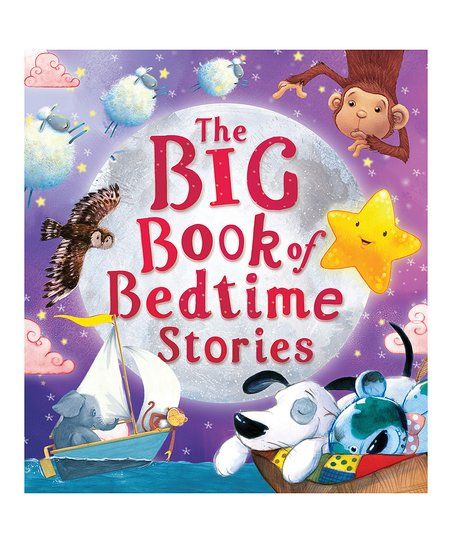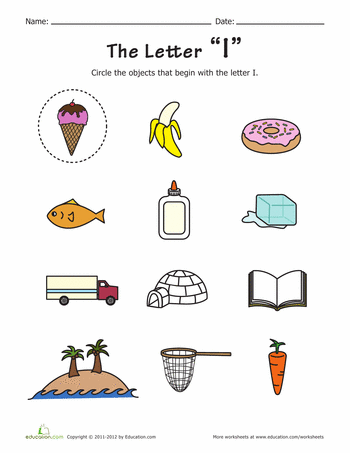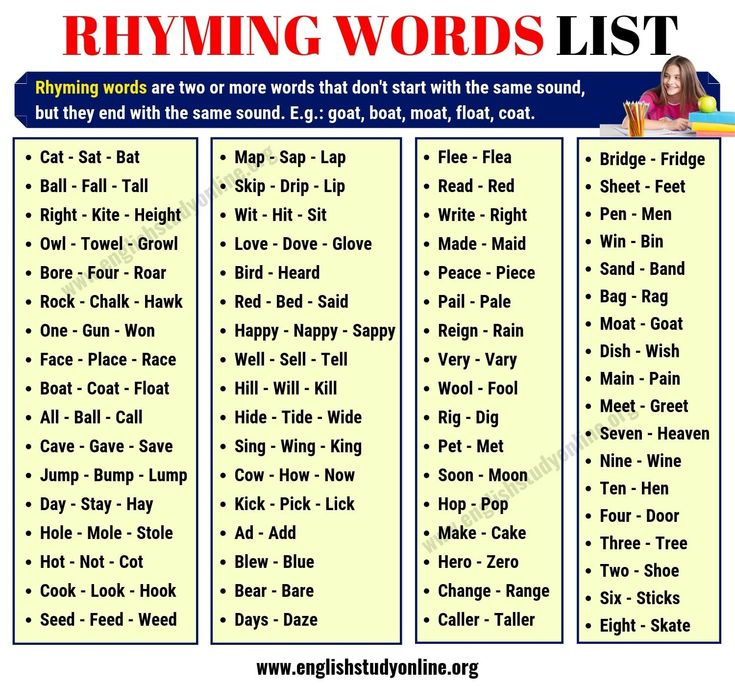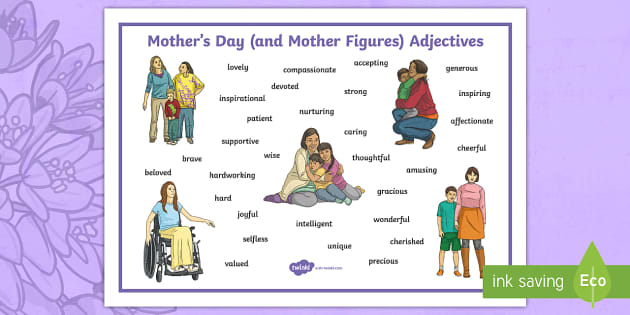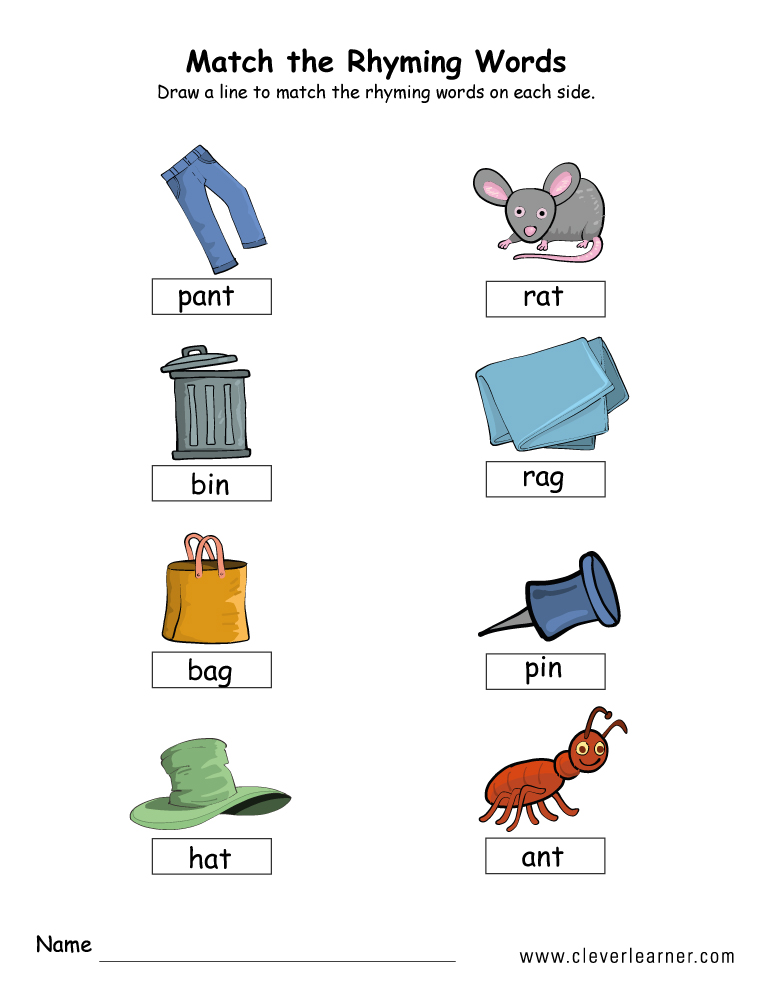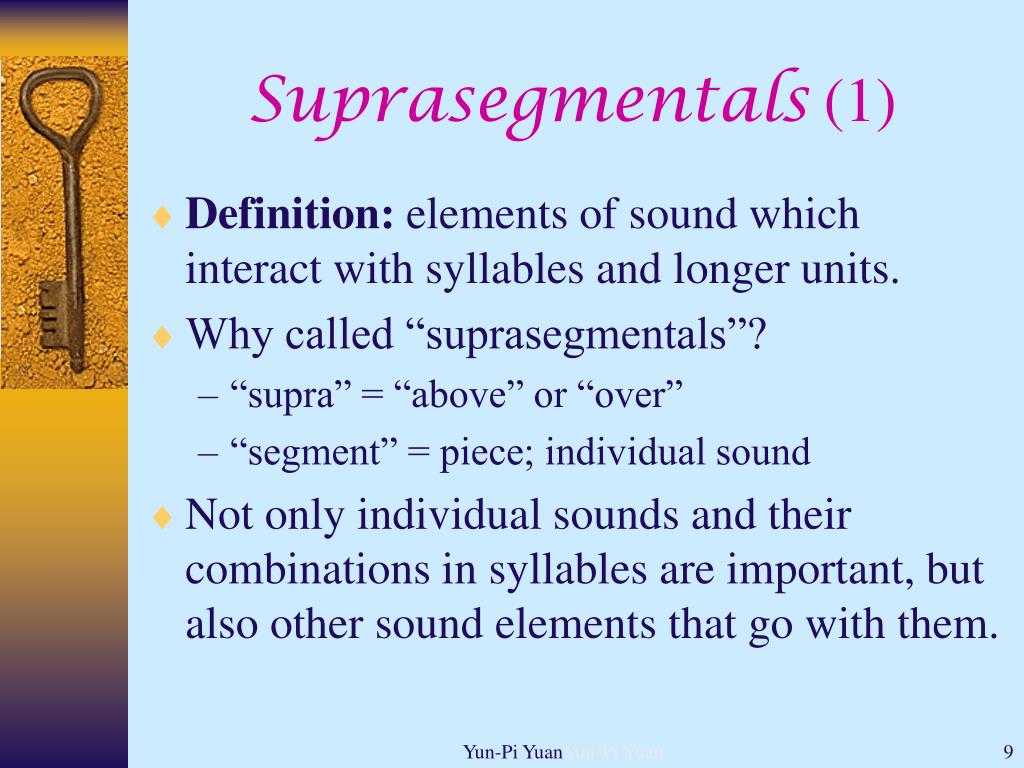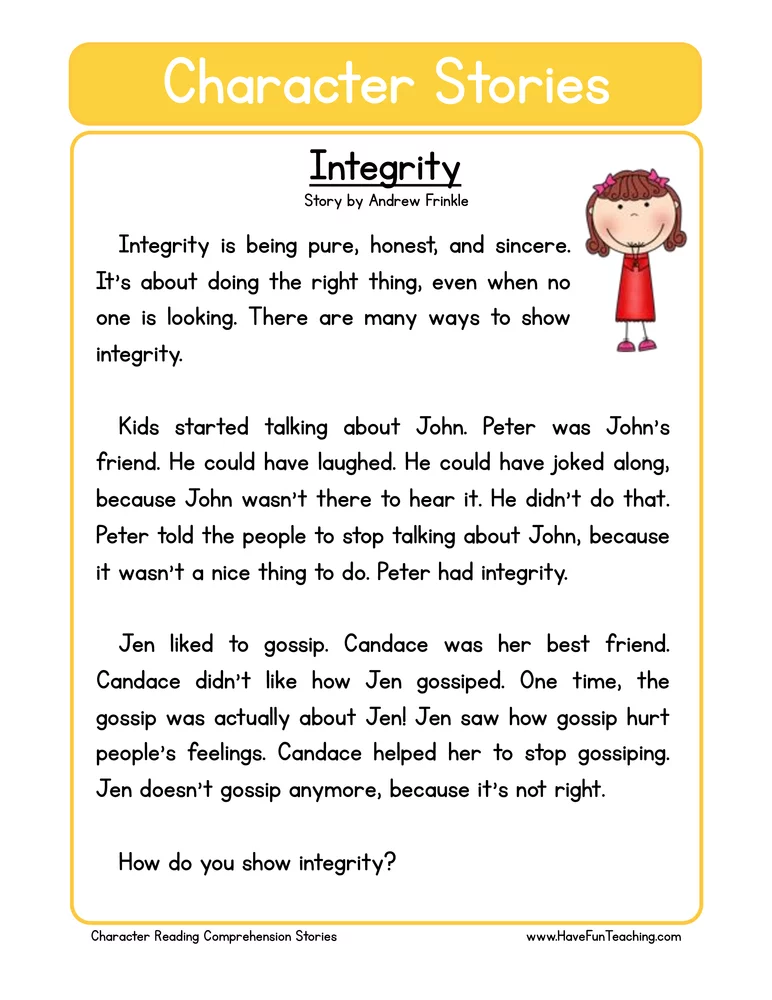Learn abc in 15 minutes
Product Review of ABC Alphabet Phonics
Spread the love
A free app that teaches toddlers and young kids who are learning to speak. By applying various senses (sight, sound, etc.), kids can learn the alphabet and a few other optional subjects. Parents can also customize the app using their voice and take photos of their kid’s favorite items to make the experience more stimulating and personal.
Website: https://apps.apple.com/us/app/abc-alphabet-phonics-preschool-game-for-kids/id415071093
What Users Love About the App
“I NEVER leave app reviews, I just delete them and ignore them. However, my 5 year old failed PreK a few times. She never learned to identify even one letter. During the pandemic we began homeschooling. I ran into this app after many frustrating sessions trying to teach her; she would often forget the letter we were working on 5 minutes later. She has brain damage and low IQ. 5 days into this app, using it for 15 minutes a day, she can now identify SEVEN letters on her own! SEVEN! Two years of special education and she couldn’t even do ONE.
I’d love to see more added to this, perhaps a separate app for sounds. This is my daughter’s saving grace right now. Thank you!”
“This is a wonderful app with so many options to make the letters more fun and appealing to kids. I also love that the multiple options allow you to go from teaching the plain letters to being able to generalize them with embellishments. I also love the option which just plays the sounds if you’re trying to focus on phonics. Another awesome feature is the min and max options for the number of choices presented. You can start with 1 letter for error free learning and then move to a larger field of choices to make the tasks more complicated. As a special educator this is the perfect app for teaching and assessing letter identification!”
“Great for learning the ABC with our toddler. He claps and shouts when he chooses the correct letter. Thanks!”
“This is great because you can personalize everything! By default it says “touch the…” letter, but you can record your voice saying different things like “Can you find the” or “Here is that…” to keep it upbeat and a little different. You can have friends and family record a few, too. That will really grab your toddler’s attention! If your child doesn’t know their letters yet, you can shut off the error noise OR change it to say “Let’s try that one again.” If they know letters backward and forward you can make it say “No! That’s so silly.” I think this app would be great for toddlers at all different levels! Best of all, it’s free. So why not take a little time to personalize it and try it?”
You can have friends and family record a few, too. That will really grab your toddler’s attention! If your child doesn’t know their letters yet, you can shut off the error noise OR change it to say “Let’s try that one again.” If they know letters backward and forward you can make it say “No! That’s so silly.” I think this app would be great for toddlers at all different levels! Best of all, it’s free. So why not take a little time to personalize it and try it?”
“I love this app! It’s a great learning tool for my 2 year old nephew. When I introduced it to him, I thought it would only demand his attention for 10 mins. My nephew played for nearly 30 minutes. He loves the celebrations after every success! He was able to navigate it by himself. I love that he doesn’t have to figure out how to flip the page like on other apps. I love that it narrates the instructions, too. We both love that I can record and personalize the affirmations that play when he chooses correctly! He was tickled to hear my voice and beside himself when he heard his name! I hope to find other apps by Grasshopper to help him study shapes, colors, numbers, and animals. I’ve searched for an app that is simple, useful and that will hold his attention for a while, so I’m overly excited to have found this!”
I’ve searched for an app that is simple, useful and that will hold his attention for a while, so I’m overly excited to have found this!”
What Users Dislike About the App
“My grandkids love this app on my iPad. They are 4,3 and 2 years old. I could customize it with my own pictures and sounds. Now, however, every time I try to record a sound to go with a picture the app crashes. SAD! This was seriously the best app I found for my grandkids, I could customize it to suit their ages and interests. I would have gladly paid for this app. Too bad I can’t find one like it. I just spent hours taking photos of scenes from my grandkids favorite movies. What a waste! VERY SAD!”
“The app works well, but the phonics game is missing some letters. There is presumably an option to add them yourself, but the app crashes every time I try to record the audio. If they could fix that part it would be perfect. Too bad they have stopped updating this app.”
“The game seems useless if you can’t record any sounds.![]() Every time I press record, it crashes. Unless I can figure out how to keep it from crashing when choosing to record, this app is completely worthless and will be deleted upon sending this review.”
Every time I press record, it crashes. Unless I can figure out how to keep it from crashing when choosing to record, this app is completely worthless and will be deleted upon sending this review.”
“I like the app, and I can definitely tell that my daughter is learning her upper and lower case letters. The two issues that I have are that the letters “I” and “a” on here are not how the children learn them in school and its gets very confusing for her. The capital I looks exactly like the lowercase L, which does not help her to understand. Also, the lowercase “a” looks different as well. Other than that I do love the app, but I’d definitely wish to see that being considered for change.”
“After reading the description and seeing that this app was highly rated, I was excited to check it out. I was happy to see a fun, educational children’s app with so many customization options. Unfortunately, none of the customization options work. I really wanted to use our own pictures! When I try to “take a new photo” the app freezes up when you try to save it.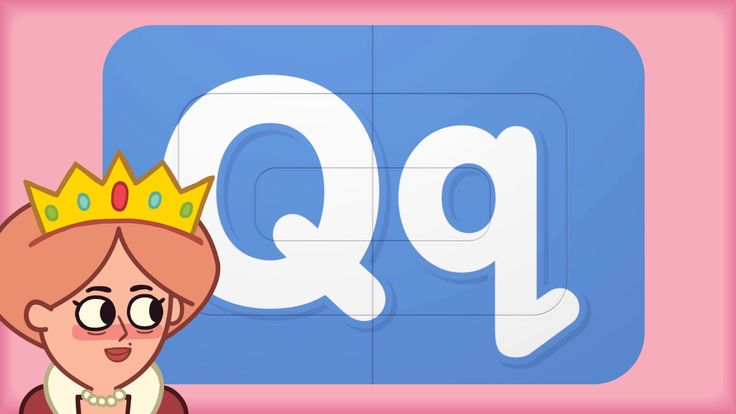 I took a few of the pictures I wanted first and then tried the “choose existing” option, and as soon as I hit that button the app crashes. I am so disappointed. The app is boring if none of the features work, just another mundane ABCs app at this point!”
I took a few of the pictures I wanted first and then tried the “choose existing” option, and as soon as I hit that button the app crashes. I am so disappointed. The app is boring if none of the features work, just another mundane ABCs app at this point!”
Reader Rating: (0 Rates)
HOMER’s Skills Adventure: Letter Play
And the skill is… Letter Play!
For this Skill Adventure, we’re working on the sights and sounds that make up letter play! Identifying letters by name and, even more essential, matching a sound to each letter are two crucial early steps on the road to reading.
Oftentimes, we think of recognizing the way letters look and sound as a skill that grows during storytime or with our interactive lessons. Don’t get us wrong, that’s an amazing way to practice! But letter play can go way beyond “The ABC Song!” In fact, you can incorporate it throughout your day, giving your Letter Liaison real-life opportunities to practice from A-Z.
Check out tips for implementing letter play into your child’s learning routine below!
Focused Learning Time (15 – 30 minutes)Explore the HOMER practice area!
Ages 2-4:
- Try out games and lessons in the Letters section (anything!)
- Go to the Stories section and check out the ABC and 123 categories
Ages 5+:
- Try out games and lessons in the Sights Words and Practice section (anything!)
- Go to the Stories section and check out the ABC and 123 categories
Ages 2-3: Sing the ABC’s song while doing a specific movement: jumping, clapping, twirling, hopping, swimming, rolling!
Ages 3-4: Tape letters (in sequence) around a space to create an instant obstacle course. You can place the letters on the floor or wall, and on different levels. Challenge your child to find and touch/collect all of them as fast as they can!
Ages 5+: Try to sing the alphabet song while doing jumping jacks. If they’re already experts, sing it backward!
If they’re already experts, sing it backward!
Ages 2-3: Fill a plastic bin with kinetic sand and help your child trace letters! If you don’t have sand, use your favorite filler (yogurt, beans, etc.).
Ages 3-4: Get some play-doh and mold your own letters. You can also use alphabet cookie cutters (and save the cutters to bake cookies later!).
Ages 5+: Add some art to your child’s tracing practice! Have them paint a letter on a large piece of paper, then ask them to draw, paint, or cut and paste things that begin with the letter around it to create a beautiful alphabet art piece. They can start with the letters of their name, or just pick a random letter of the day!
Yoga or Stretching (10 – 20 minutes)Ages 2-3: Do a simple yoga sequence while singing the ABCs.
Ages 3-5+: Try some mindful breathing with alphabet sounds. Ask your child to breathe in deeply.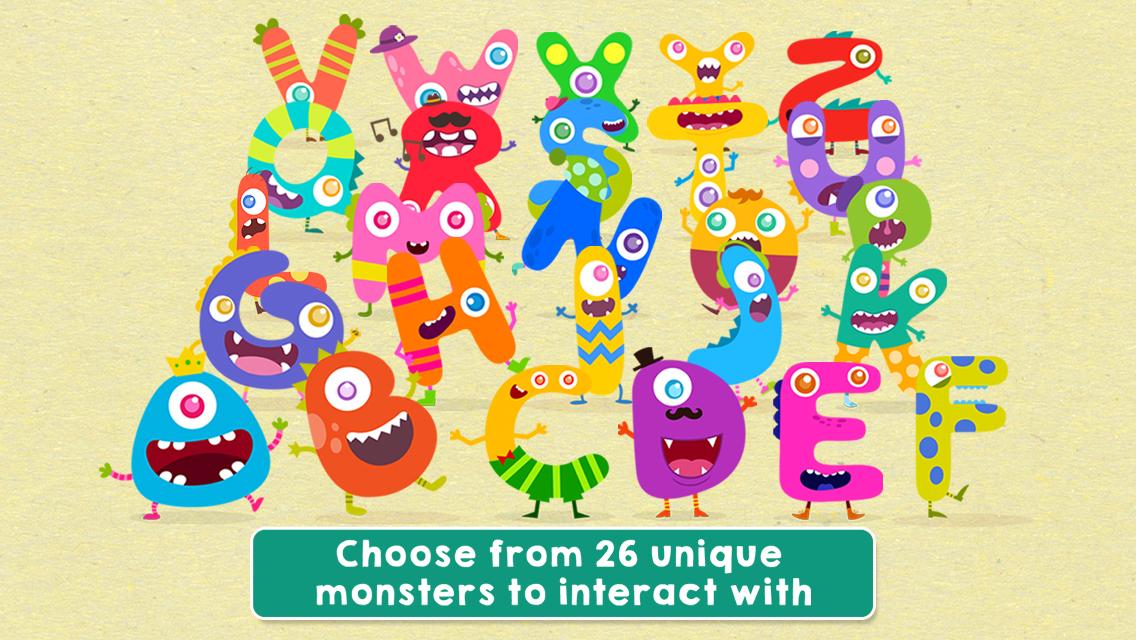 As they exhale, have them mimic the sound you make. Repeat with different sounds of the alphabet. Works best with sounds (Ahh, Sss, Zzz, Ooo, Mmmm).
As they exhale, have them mimic the sound you make. Repeat with different sounds of the alphabet. Works best with sounds (Ahh, Sss, Zzz, Ooo, Mmmm).
Ages 2-3: Set up a series of toys/activities that start with the same letter (e.g. blocks, books, and bears) and invite your child to play. You can add some mystery by putting the object in a box with a top and label it with a giant letter. Encourage them to choose by naming the objects out loud.
Ages 3-4: Challenge your child to take photos of things that start with a particular letter of the alphabet. You can even extend the game by adding categories!
Ages 5+: Challenge your child to take photos of things that look like a letter, either outside in the yard or right in the house.
Reading/Story Time (15 – 30 minutes)Ages 2-3: Read a story that highlights letter sounds (Dr. Suess’ ABC and the Amazing Alphabet book are both great for this!)
Ages 3-4: Read a story that highlights a specific sound. Anytime your child spots the letter, they can say that word in a funny way. (For example, if you’re reading a Peppa Pig book, every time you see the letter P, you say it with a loud pop.)
Anytime your child spots the letter, they can say that word in a funny way. (For example, if you’re reading a Peppa Pig book, every time you see the letter P, you say it with a loud pop.)
Ages 5+: Have fun with Mad Libs! Pick a letter, then fill in each blank with a word that begins with that letter and read your silly new story. If you don’t have Mad Libs handy, you can always make up your own!
Family Helping Time (10 – 20 minutes)Ages 2-3: Sing the alphabet song together while you wash your hands, or (for a real challenge) while you brush your teeth!
Ages 3-5+: Play iSpy clean-up. Spy the item you want to clean up, then challenge your child to put it away as fast as they can. Give them the instruction by telling them the sound of the first letter of the object (for example, “I spy something that begins with the ssssss sound” socks!). Add additional clues if needed!
Making Memories (20 – 30 minutes)Ages 2-4: Put a new spin on handprint art. Using 1 letter of the alphabet for each day, use finger paint to make a handprint on a piece of paper. Then draw, stencil, or paste a letter of the alphabet in the palm center. You can start with A and see how your hand grows or changes over the next 26 days. You can also do this with weeks!
Using 1 letter of the alphabet for each day, use finger paint to make a handprint on a piece of paper. Then draw, stencil, or paste a letter of the alphabet in the palm center. You can start with A and see how your hand grows or changes over the next 26 days. You can also do this with weeks!
Ages 5+: Create an acrostic of their memories of the day based on the letters in their name!
Snuggle Time (15 – 30 minutes)Ages 2-4: Let your child pick a letter, and then draw that letter on their back, arm, or forehead.
Ages 5+: Build self-esteem and vocabulary at the same time by describing your child using words that begin with the letter of their choice (or start with the first letter of their name). For words they don’t know, tell them what it means, and how they embody that word.
Caregiver Gets Some Work Done Time! (30-60 Minutes)Ages 2-3: Give them some letter coloring pages to decorate.
Ages 3-4: Watch a show with closed captioning/subtitles (and the sound) on.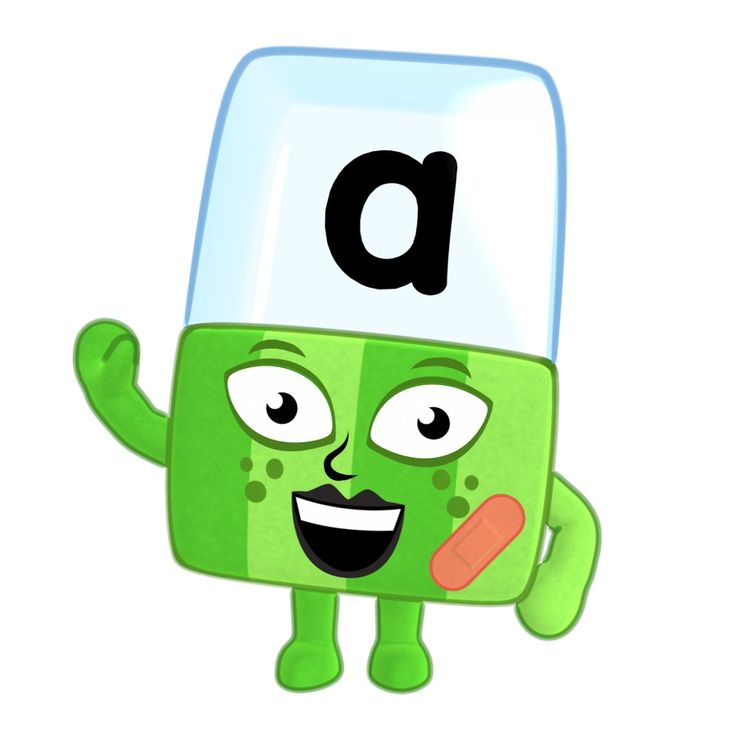
Ages 5+: Set up some simple, letter-themed word search puzzles.
Author
How to quickly learn the alphabet - learning letters with a child
Letters surround us everywhere. The child sees them in books and magazines, on product packaging, in shop windows. He can't help wondering what it is. Over time, he begins to understand that adults can read, begins to copy his parents, having learned a poem or a fairy tale by heart, and pretending that he is reading a book.
Experts recommend teaching a child to read shortly before school, since at an earlier age his brain is not yet ready to perceive such information. You can learn sounds with it, learn to distinguish them in oral speech, start mastering the alphabet. This pre-letter period is very important, because thanks to it the child will be able to learn to read fluently and understand what he read.
At what age do you start learning letters?
Many parents are sure that a child's development should start almost from the cradle. But neuropsychologists warn that learning letters and numbers before the age of 3 is harmful. At this age, the emotional and sensory sphere should be formed. If we force a child to learn, then we violate the laws of brain development, which can have negative consequences.
But neuropsychologists warn that learning letters and numbers before the age of 3 is harmful. At this age, the emotional and sensory sphere should be formed. If we force a child to learn, then we violate the laws of brain development, which can have negative consequences.
No specialist will tell you that at the age of 3 or 4 a child should know all the letters. Of course, if you wish, you can force him to learn the alphabet, but this will not be useful, but, on the contrary, can harm. The brain is ready for reading most often by the age of 5-6, and only in 20% of babies - by 4-5. Before this time, it is not worth studying letters.
But this does not mean that you can forget about the development of the child. At 3-4 years old, you need to work on the development of speech, teach the baby to ask and answer questions correctly, pronounce words, and study the world around him. You need to work on fine motor skills, teach him to dance, form a sense of rhythm, and so on.
These are the recommendations. However, all children are different. If a child has shown a sudden interest in letters, it means it's time to start learning. And it does not matter if it manifested itself late, for example, at 6 years old. The child should want to read, only after that you can study with him.
However, all children are different. If a child has shown a sudden interest in letters, it means it's time to start learning. And it does not matter if it manifested itself late, for example, at 6 years old. The child should want to read, only after that you can study with him.
Psychologists note several signs that indicate a child's readiness for learning:
- The child perceives well what he has read by ear and can tell what the book is about.
- He knows how to build phrases, pronounce all sounds.
- Interested in what is written in a children's magazine, book or poster.
- Pretends to read, imitating adults.
If all these signs appear, you can start classes. You can’t put pressure on a child, force him to study, bribe him (“learn the letters - I’ll give you a chocolate bar”) - this will not achieve anything.
In those cases where the interest in letters appeared early, there is no need to give up classes. But do not overload the baby, work with him for no longer than 7 minutes, classes do not have to be done every day, you can take breaks of 2-3 days.
How to start learning the alphabet?
The child began to show interest in letters. No need to immediately load it with knowledge, cramming the alphabet. Move a little. The easiest way for children to remember the first letter of their name. Explain to him what this letter is, what it is called. You can ask him to find this letter in the text. Gradually, he will learn to highlight it, will pay attention to it. The first step has been taken.
Parents now trust their children's education to various children's tablets, phones and other similar toys. Remember that they are teaching letters, not sounds. Toddlers need to be taught precisely sounds, so it will be easier for them to master reading.
A letter is a graphic representation of sound, each has its own name. But learning to read, knowing only the names of the letters, is very difficult. Imagine that the child will need to read the word "ball". How will he do it? Just as he was taught: "beael".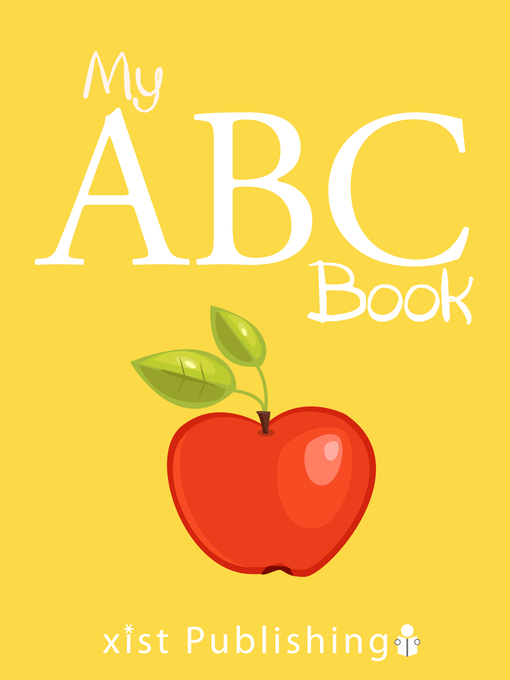 And all because he pronounces letters, not sounds.
And all because he pronounces letters, not sounds.
It is better to start learning with sounds, pronouncing them with the child. Parents themselves should not confuse sound and letter. Sound is what we hear. A bumblebee buzzes - this is a sound, a hammer knocks - this is also a sound. But far from all sounds we can get words. If we clap our hands, the sound will appear, but the word will not.
You can create a word from special sounds called speech sounds. Make sure that the child does not confuse the letter and sound. Explain to him that a letter is an icon that can be seen in a book or drawn on paper. Letters can be seen with the eyes and sounds can be heard.
General recommendations for teaching a child
If you decide to work with a child, remember the basic rule - he should be interested. You can't force him. At this age, the easiest and most accessible way of learning is through the game.
It is difficult for kids to concentrate, to sit in one place for a long time, so classes should be short, 5-10 minutes each.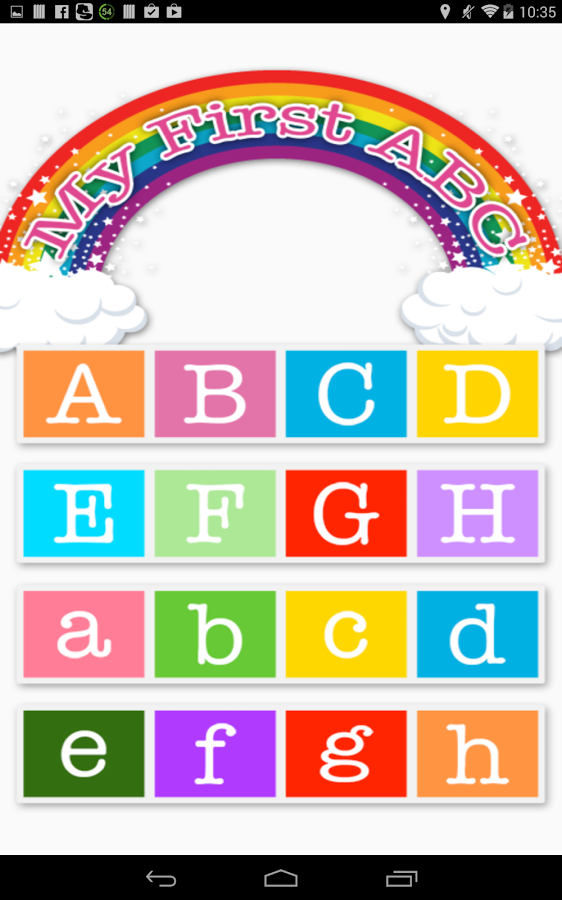 As soon as you notice that he has become bored, switch to something else. If he forgot everything that you went through, do not get annoyed, repeat again until he remembers. If you overload your child with information, he will develop an aversion to learning.
As soon as you notice that he has become bored, switch to something else. If he forgot everything that you went through, do not get annoyed, repeat again until he remembers. If you overload your child with information, he will develop an aversion to learning.
At an early age, a child develops visual-figurative thinking, and only then - abstract-logical. This means that it is useless to draw letters on paper or a board. So you can't learn them. For him, it will be just a set of dashes.
The child needs a visual association. For example, if you are learning the sound "a", you can show him a picture of a watermelon or any other item that starts with that letter. Stock up in advance with soft cubes with letters, bright cards, coloring books, beautiful colored primers.
Do not learn letters in alphabetical order. It is better to start learning with vowel sounds. The letters that are most often found in speech are studied first, then you can move on to rarer ones.
How to learn vowels?
First, explain to your child that all words are made of sounds, just as houses are made of bricks.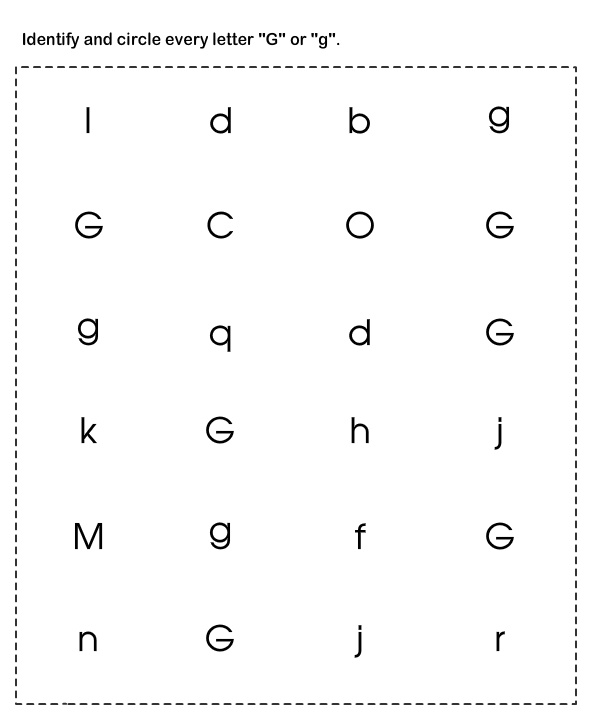 The more sounds in a word, the longer it is. After that, you can proceed to the study of sounds.
The more sounds in a word, the longer it is. After that, you can proceed to the study of sounds.
Start with "a" . You can show the baby pictures that show objects whose names begin with this letter. Draw with him the mouth that makes this sound, note how we open it wide. Let him try to name the words that begin with this letter. Do not overload the child: 1 lesson - 1 letter.
Try to consolidate the acquired knowledge. So you go to the kindergarten, you saw a pharmacy, let the kid try to find the letter that you studied. Bought a children's magazine, see if the title has the letter "a" . You can mold a letter from plasticine or dough, cut it out of paper. You can lay it out of sticks or sand.
It will be much easier for you to captivate your baby if you always have blocks with letters, bright books, cards at hand. You can sing a song about a letter or listen to a funny verse.
So, study all the vowels one by one. At the end, you can explain that the sounds that you have already learned are called vowels.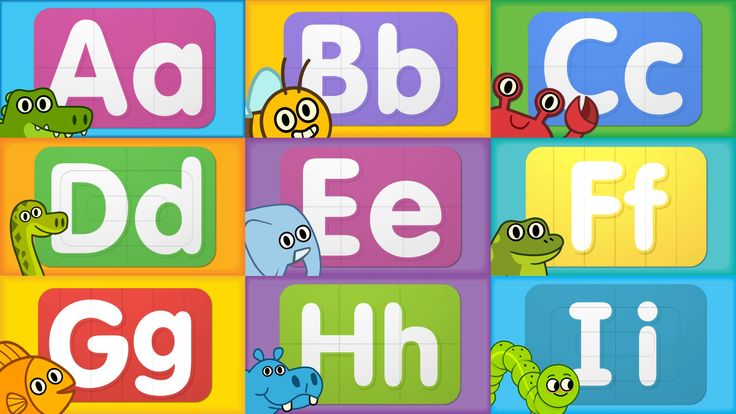 These are sounds that can be sung. Try to sing together "ah-ah-ah" or "woo-woo" .
These are sounds that can be sung. Try to sing together "ah-ah-ah" or "woo-woo" .
Remember that we have 6 vowels ( a , o , y , e , s , and ) and 10 vowels. The letters i , e , i , i consist of 2 sounds. It is better to postpone the study of the latter for later, because there is no sound "i" , i is a letter consisting of 2 sounds. Do not confuse the child so that later educators and teachers do not have to retrain him.
How to learn consonants?
After you have learned the basic vowels ( a , y , and , o ) you can move on to the consonants. You need to start with the simplest consonants ( b , p , m , n , t , g ).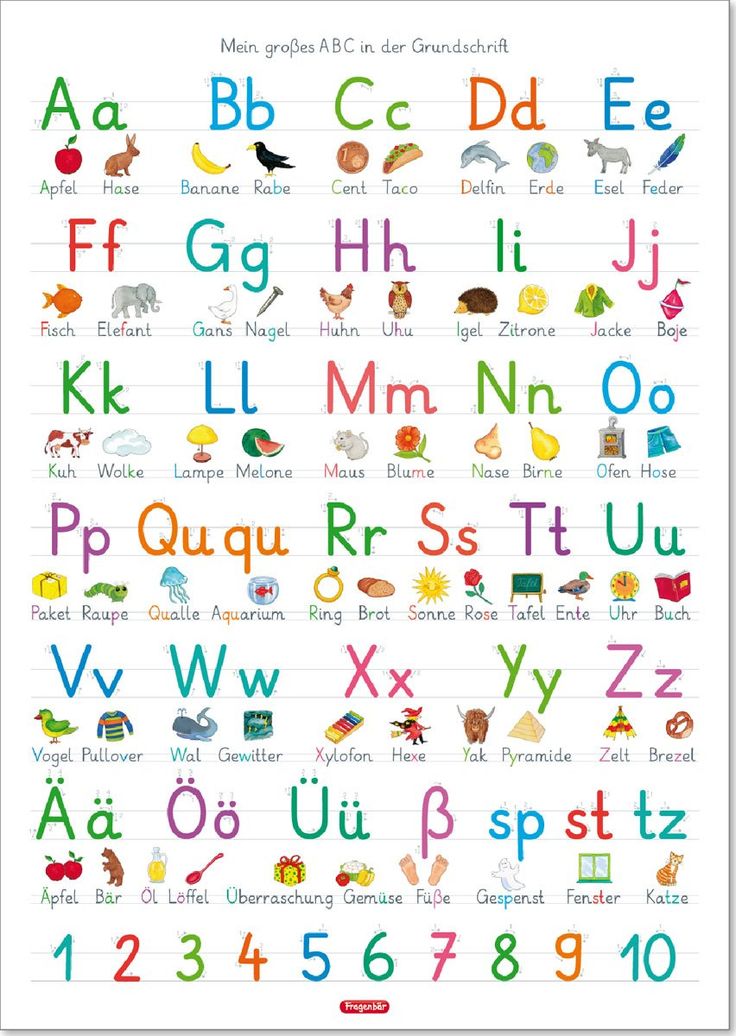 And here again we remember that we are teaching the child sounds, not letters. We know what to say0065 em ”, “ en ”, “ be ”, but children do not need to know this yet. The child must learn that this is the sound " mm " or the sound " nn ". After the baby learns simple consonants, you can proceed to the study of hissing.
And here again we remember that we are teaching the child sounds, not letters. We know what to say0065 em ”, “ en ”, “ be ”, but children do not need to know this yet. The child must learn that this is the sound " mm " or the sound " nn ". After the baby learns simple consonants, you can proceed to the study of hissing.
Just like with vowels, knowledge needs to be consolidated. Children may confuse letters. To prevent this from happening, play associations. You can ask the children to think of what this letter looks like. Look for objects on the street that resemble this letter. For example, you walked past the horizontal bar, it is shaped like the letter " p ”, or look at the doorway, also resembles “ p ” in shape. Fold it out of pencils, look for it in store signs.
Alphabet learning techniques
There are several popular methods for teaching children to read and memorize the letters of the alphabet.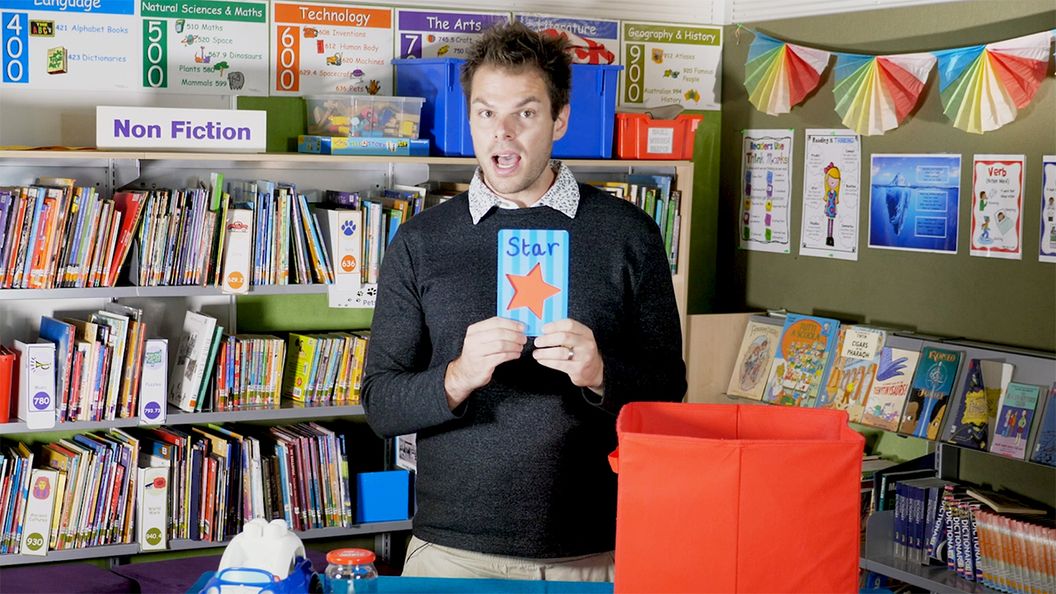 You can use them, especially since specialists worked on them. But, no matter what method you work with, it is important to remember that your classes should not resemble lessons at school.
You can use them, especially since specialists worked on them. But, no matter what method you work with, it is important to remember that your classes should not resemble lessons at school.
Children at this age should play and get the information they need through games. Therefore, after a short training part, immediately proceed to an interesting, gaming one. Creative activities are also very useful, with the help of which you not only study letters, but also develop the child’s fine motor skills, improve his drawing and coloring skills, and strengthen the ability to use scissors.
Games and games
There are many games to help you consolidate your knowledge. We will give a few examples.
1. Find the words with the right sound . You need to prepare cards that show different objects. The child must choose among them those in which there is a studied sound. First, you can simplify the task: ask him to find words that begin with this letter.
2. Catch the sound . To stretch a little, mother and child walk around the room. Mom calls different words. As soon as the child hears a word with the desired sound, he stops and claps his hands.
3. Think of the word . Ask your child to come up with as many words as possible with a certain sound. You can do this in turn, for example, first the mother calls the word, then the baby.
The task needs to be complicated, that is, the sound can be not only at the beginning of the word, ask him to come up with a word in which this sound will be at the end or in the middle. For example, you are learning the sound "a". First, you select words that begin with this letter - apricot, orange, then those that end in "a" - Moscow, jellyfish or contain the sound "a" in the middle - mosaic, eye.
4. Determine where the sound is hidden. You need to draw a simple word scheme: three squares connected to each other. Each square denotes its own: the beginning of the word, the middle and the end. Put this word scheme in front of the child, give him a chip.
Put this word scheme in front of the child, give him a chip.
You name different words, and he must show on the diagram where the sound that you pass is located. For example, if you called the word "watermelon" (you can show a picture), the child must put the chip in 1 cell, and if the word "fox" - then in the 3rd cell.
5. Ball game . An adult throws a ball to the child and calls different words. If they have a letter being studied, he catches the ball, if not, then he does not catch it. To begin with, you can use words in which this letter is at the beginning, then complicate the task, that is, it can be in the middle or end.
Author's methods of learning the alphabet
There are several recognized methods of teaching reading, each of which can be devoted to a separate article.
Zaitsev's cubes
The basis of Zaitsev's technique is a game, that is, children simply play with cubes (there are 52 cubes of different sizes in the set) and at the same time learn to read without making any effort. These games can be started from 6-12 months old, but up to 2 years old they are used like regular blocks, and children after 2 years old can start making words.
These games can be started from 6-12 months old, but up to 2 years old they are used like regular blocks, and children after 2 years old can start making words.
Zaitsev's main unit is a warehouse. It can consist of a consonant and a vowel, or a single letter. The basis of this method is the warehouse principle of reading. In addition to cubes, a large warehouse table is also used.
This technique has many advantages, the main of which is that any child can be taught to read. But there are also disadvantages, for example, over time, children will have to be retrained, because they remember that letters are indicated by one color, and the teacher enters his own colors, for example, red is a vowel. In addition, the child is used to the fact that words are divided into warehouses, and not into syllables. Yes, the benefits are very expensive.
Doman's cards
The neurosurgeon Glen Doman developed his technique for children with CNS disorders, but then it was also used to teach healthy kids. He recommends teaching children to read not by letter, but by words, since letters mean nothing to him, and words have real designations.
He recommends teaching children to read not by letter, but by words, since letters mean nothing to him, and words have real designations.
For this, whole words are written on the cards in large print (at least 7-10 cm), for example, “mother” or “dad”, which must be quickly shown to the child, voicing each word. With the help of this method, even a small child can be taught to read. Training is necessarily carried out at an early age; after 5 years, the Glenn Doman method no longer works.
Olga Soboleva's Methodology
The principle of this training is based on the "two-hemispheric" work of the brain. The teacher tries to use the dominant type of memory, that is, the material is divided into 3 groups: for kinesthetics, visuals and auditory.
Many of its techniques are also used by ordinary teachers when teaching traditional methods to make it more interesting for children to study. Well suited for creative children and parents, it is not recommended for families where logic and structure come first.
Polyakov's method
Its author came up with 7 steps of learning to read, 70 lessons in total. Each lesson is detailed. They are held in the form of a game, take no more than 10 minutes. Stages 1 and 2 are the study of letters, warehouses, reading in warehouses.
Sergei Nikolaevich Polyakov himself, unfortunately, is no longer alive, but his work was continued by his son, as well as teachers who practice this method. If you wish, you can purchase books that describe in detail how to conduct classes, as well as video files with examples of classes.
Creative exercises
To reinforce the acquired knowledge, it is useful to conduct creative activities. For example, you can make a beautiful alphabet together. We studied the letter - cut it out of cardboard. It is better to choose a dense material. If it is difficult for the baby, you can help him, and the child will decorate - attach beads, groats, sequins, beautiful fabric, etc. to it.
to it.
When you have collected the entire alphabet, you can decorate the children's room with it by connecting the letters into garlands, or hang it on the Christmas tree instead of toys. You can cut out paper blanks for letters, and the child must fold the whole letter from these parts.
Preschoolers love to draw and color. You can buy coloring books with letters, he will color them and remember what kind of letter it is. Or ask him to draw with felt-tip pens on paper, with chalk on a blackboard what you have already studied. But at this age, children should not be taught writing, this should be done by teachers in elementary school. The only thing you can teach your baby is to write in block letters.
If you are baking pies, ask your child to make familiar letters out of the dough. You can sculpt from plasticine or clay, decorate figures with cereals or peas. These activities will not only distract the baby from the TV, but also help develop fine motor skills.
Does the child spend a lot of time with the construction set? Let him try to make a letter out of it, which you recently passed. Or he will lay it out from counting sticks, sand, buttons, beans. Just be careful not to push small parts up your nose or mouth.
As we can see, learning the alphabet is not a tedious and boring activity, but a kind of game. If you follow this rule, your baby will not only learn all the letters, but will eventually fall in love with books, magazines, and will read with pleasure.
Thinking Trainer
Thinking Trainer is a database of 4,000 tasks designed specifically to develop the thinking skills of students in grades 1-4
learn more
How to quickly learn the alphabet with a child
Every parent has their own opinion about the education of their children. Someone believes that this is the responsibility of preschool teachers and school teachers, while others are ready to intensively deal with the child on their own. But, regardless of the parental position, there is an indisputable fact: the study of the alphabet is the basis for the further development of the child.
But, regardless of the parental position, there is an indisputable fact: the study of the alphabet is the basis for the further development of the child.
Letters are present in a child's life from a very young age. He constantly sees them on signs during a walk or at home in children's books. Of course, at first they are perceived by the baby as simple signs and hooks. But as they grow older, the child begins to understand that this is a way of transmitting information. Of course, colorful pictures and cartoons are still more interesting, but over time, the desire to get to know the alphabet becomes more and more obvious.
Learning the alphabet is one of the most important stages of development. Learning to put letters into syllables and words, mastering the skill of reading, and then writing, children discover a whole new world for themselves. But it is important that the learning process is not only effective, but also exciting. When should you start studying? What techniques are better to use so that children memorize letters faster? Is it possible to learn and play at the same time? Let's try to deal with these questions.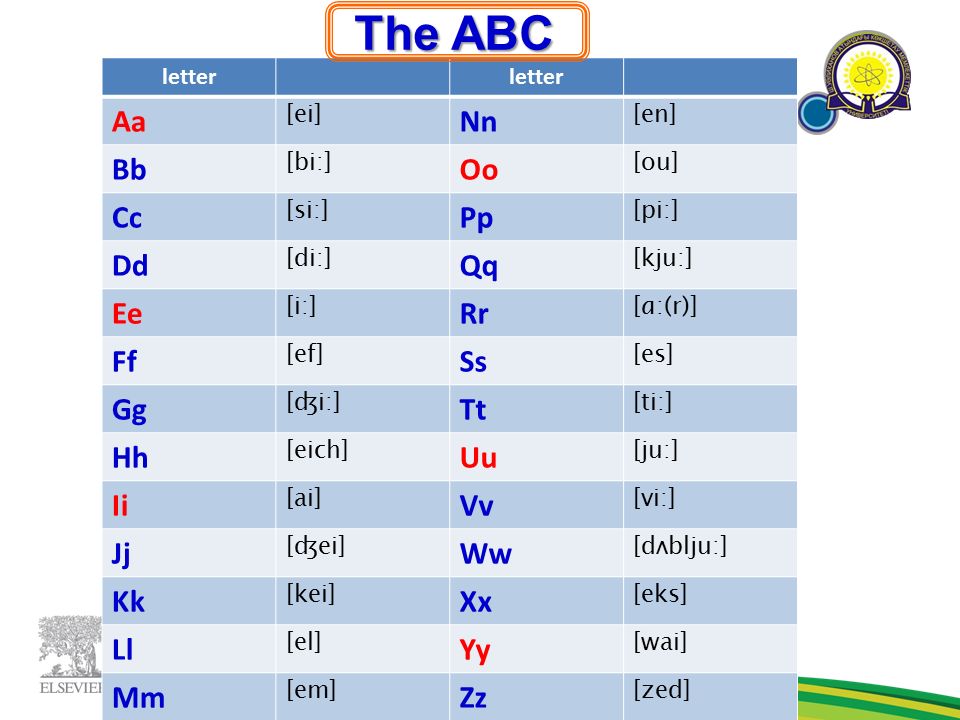
Learning the alphabet: goals and objectives
Before starting to learn the alphabet, parents should answer the question for themselves: for what purpose? After all, all actions and actions are performed to achieve a specific goal, and the development of children is no exception. Some ambitious moms and dads dream of raising a comprehensively gifted and developed child, so they try to start learning as early as possible. Others just want to brag about the success of their child at every opportunity.
But for adequate parents, the main goal of learning letters is to learn to read. And here a completely different question arises: is the child ready for this at this stage? First, let's talk more about what an alphabet is. So this is:
- not just letters, but letters in a strict sequence, which are the basis for any language;
- knowledge of the alphabet is the foundation for mastering the basics of reading;
- the alphabet is your companion for life: it is the basis for organizing documents, reference books, dictionaries, archival information.

Of course, you can teach your baby the alphabet at any age. It is enough to show him cards with letters every day or study the alphabet from a colorful book, and by the age of two he will remember the alphabet. But any knowledge must be put into practice, and it is important to understand that not all children are ready to read from an early age.
Therefore, it makes no sense to spend time and effort on learning the alphabet just to develop memory and attention. The likelihood that a child will forget the letters by the time he is ready to learn to read is very high. There are many other ways for early development. Toddlers 2-3 years old can simply be introduced to the letters without following the sequence.
But if we are talking about children 5-6 years old, who have a school on the horizon, then it is necessary to learn the alphabet.
When to start?
Experts do not have clear guidelines regarding the age at which one should start learning the alphabet. However, both educators and psychologists have long come to the conclusion that the most favorable time is five years. During this period, the child shows curiosity and interest in everything new. It is already developed enough not only to memorize information, but also to be able to apply it in practice. After all, this is precisely the main goal of learning the alphabet - to use images in the form of signs, which are letters, for reading.
However, both educators and psychologists have long come to the conclusion that the most favorable time is five years. During this period, the child shows curiosity and interest in everything new. It is already developed enough not only to memorize information, but also to be able to apply it in practice. After all, this is precisely the main goal of learning the alphabet - to use images in the form of signs, which are letters, for reading.
Of course, you can start studying even earlier - in two or three years. But at this age, not every kid is ready to learn to read. He will most likely memorize the alphabet mechanically, like a counting rhyme, but the knowledge gained will not be used in practice. In addition, his speech apparatus is still being formed. It is highly likely that he will pronounce some letters incorrectly, which will later become a problem when reading.
In general, these are just recommendations. It is always necessary to focus on the development of the child and his individual abilities.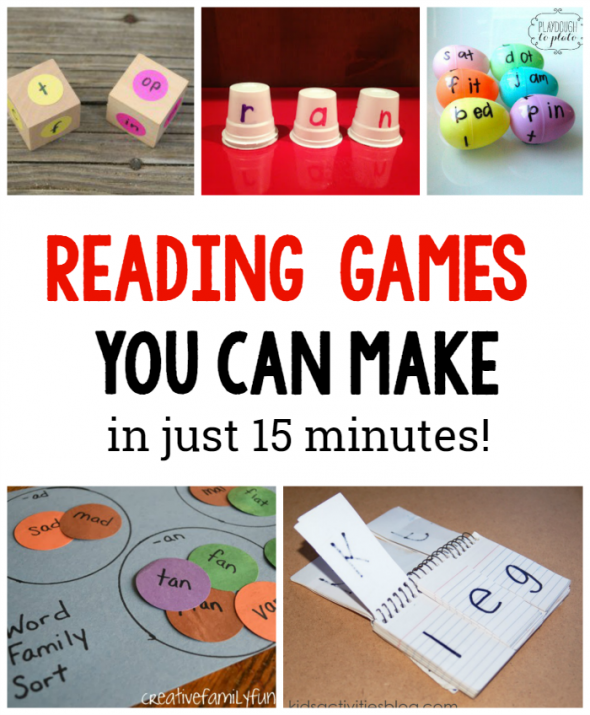 For some, it is not difficult to master the letters at the age of three, for others this peak is conquered closer to school.
For some, it is not difficult to master the letters at the age of three, for others this peak is conquered closer to school.
Learning the alphabet correctly
Not all parents know how to teach their child the alphabet correctly. Unfortunately, the mistakes made in training will affect in the future. And the teacher in the primary grades will have to make a lot of efforts to correct them. There are a few basic rules that will help you in your studies.
- No need to learn letters in alphabetical order. Of course, the sequence of letters is important, because learning the alphabet trains memory and attention. But not for preschoolers. At this stage, it is necessary to use a clear and logical scheme, without undue burden on children's perception. You should focus on how these very letters look and sound. This approach will allow the child to form an understanding of the structure of the Russian language.
- Start with vowels. Vowels are easier to pronounce, so the baby will not have problems learning them.
 There are only ten such sounds. As soon as the child understands how vowels sound and are written, you can begin to study consonants.
There are only ten such sounds. As soon as the child understands how vowels sound and are written, you can begin to study consonants. - Learn vowels separately from consonants. This paragraph is a direct continuation of the previous one: first vowels, then consonants. If you start to master the letters mixed up, the baby may get confused. It is to us adults that the difference between vowels and consonants seems obvious. It is not so easy for a child to understand on what basis sounds are divided.
- Don't focus on the letters. Learn sounds. This item from our set of rules is an opportunity for parents to remember phonetics. While still at school, each of us learned very well that the name of a letter and its sound do not always coincide. This feature of the Russian language may seem too complicated for a child. Over time, he will remember how the letters "em", "el", or "be" sound. But in order to make it easier for him now to master reading by syllables, it is better to immediately learn the sounds: "m", "l", "b".

- Use a convenient consonant order. Start learning consonants with the letters "m", "l", "s", "x", "r", "sh". It is easy to make syllables out of them, a relatively drawl pronunciation will allow you to gradually switch from a consonant to a vowel when reading. The next letters to study are "k", "t", "p", then - "b", "c", "h", "g", "d", "u". Then you can already learn all the other letters.
- Take your time! And learn the alphabet according to age. In children 4-5 years old, the subcortical layers and the right hemisphere of the brain are almost completely formed. The kid already has a good orientation in space, developed motor skills and figurative perception. It's time to get a primer and start learning! Learn one or two letters at a time and use what you have learned. For example, while walking, ask your child to look for a familiar letter on the signs. Do not force the development of the alphabet and do not forget to regularly repeat the sounds already learned.
And never turn the learning process into a lesson. Even at school, at the initial stages, it is difficult for children to learn from bell to bell, to say nothing of preschoolers. It is much more effective and interesting to get acquainted with letters in a playful way, doing no more than 10 minutes a day.
Even at school, at the initial stages, it is difficult for children to learn from bell to bell, to say nothing of preschoolers. It is much more effective and interesting to get acquainted with letters in a playful way, doing no more than 10 minutes a day.
Lessons with a child of 3-4 years old: learning and playing
Not every kid at this age is ready for learning. But if you see that the child is showing interest in the colorful alphabet or blocks with letters, then it may make sense to try to start classes. It must be said right away that training should be like a game. No coercion and rigor, otherwise you risk developing a reluctance to learn from the crumbs in the future.
A few important rules:
- exercise no more than twice a week for 5-7 minutes;
- don't expect instant results - a three-year-old kid needs more time to memorize information;
- study vowels in pairs: A-Z; Uh; Y-I; Oh-Yo; U-Yu.
Use colorful pictures, letter toys, children's books.
Closer to four years, you can begin to get acquainted with consonants. At this age, the child already speaks well, so he should not have problems with the correct pronunciation of sounds. In addition, at the age of four, children perceive abstract information quite well. Learning for them will be much more interesting if, in addition to pictures and toys, you use cubes, puzzles, interactive or magnetic alphabet, coloring books.
Consonants will take longer and be a little more difficult to learn. But even with this difficult task it is quite possible to cope if we act gradually. First, there are more consonants in the alphabet than vowels. Secondly, most consonants have two sound options: hard and soft. This can cause some difficulties, but only if the child has poorly learned vowels. If there are no problems with them, then he will deal with the sounds very quickly.
Having understood the difference between how the Ы and И sound, the baby will figure out how the syllables WE and MI should sound with your help. For clarity, you can make a table with paired syllables. And do not forget that all sounds must be pronounced clearly. Show this by your own example and achieve the same from the child, since correct articulation is the basis of good diction.
For clarity, you can make a table with paired syllables. And do not forget that all sounds must be pronounced clearly. Show this by your own example and achieve the same from the child, since correct articulation is the basis of good diction.
Back to School: Teaching Children aged 5-6
If you still decide not to pursue early development, but to postpone education until the age of 5-6, then you will not lose anything. Psychologists consider this period to be optimal for learning, and right now the child is ready to consciously assimilate new information. In addition, very soon to go to school, which means you need to properly prepare.
Children aged 5-6 are easier to work with, because they can be motivated. Tell your daughter or son about how great it is to read books on your own, or explain that knowing letters and syllables will definitely come in handy at school. Yesterday's baby will feel like a truly adult and will show interest in knowledge.
At this age, there is no need to concentrate on learning exclusively through play. You can already use creative tasks, copybooks, sets of cards for preschoolers. To study syllables, you can use cubes, connecting vowels and consonants. And be sure to pay attention to the speech of the child. It is important that all sounds are pronounced clearly and correctly.
You can already use creative tasks, copybooks, sets of cards for preschoolers. To study syllables, you can use cubes, connecting vowels and consonants. And be sure to pay attention to the speech of the child. It is important that all sounds are pronounced clearly and correctly.
Not to force, but to interest!
The most effective way to get the desired result from a person is to motivate him. For children, motivation should be linked to an interest in learning. What's the easiest way to get your little one interested? Of course, through the game. Here are some ways to learn and play at the same time:
- Be sure to buy didactic material - cubes, lotto, dominoes, puzzles with letters and pictures. Colorful games always arouse interest in children. And if this game has rules (for example, in double puzzles you need to choose the corresponding letter for the picture), then it will be doubly interesting to practice.
- Periodically allow your child to type on the computer in World.
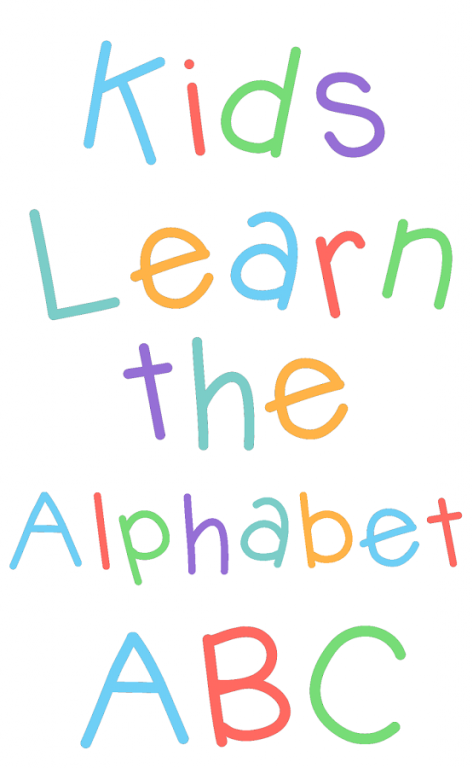 Set the settings to a large font and ask your child to find the letter on the keyboard. A colorful image on the screen will help you remember the studied signs better.
Set the settings to a large font and ask your child to find the letter on the keyboard. A colorful image on the screen will help you remember the studied signs better. - Surely every parent remembers that once there was a soup with letters on sale. Such a product can still be found in stores today. Why not use it for learning? If time permits, you can bake letters in the form of cookies and have an entertaining tea party.
- If you have old glossy magazines at home, you can also use them for class. Take scissors and cut out familiar letters with your child.
- To make it easier for a child to memorize letters, come up with an associative array. For example, W looks like a beetle, D looks like a house, W looks like a brush. By the way, associations are useful not only for memory, but also for the development of figurative and logical thinking.
- You can also develop motor skills in the process of learning. Take buttons, beads, pebbles and make syllables out of them.
 Does your child like to draw? Use finger paints and draw letters with your child.
Does your child like to draw? Use finger paints and draw letters with your child. - Children aged 5-6 years can be encouraged to recognize letters by ear. The essence of the game is simple: you think of a letter and pronounce the word. If it has such a letter, the child claps his hands. Just do not guess too long and complex words, otherwise the preschooler may get confused.
There are many more exciting games that will help you learn letters.
Some useful tips
If you decide to learn letters with your child on your own, you should understand that it will not be quick and easy. You will have to be patient, but these efforts will certainly be rewarded with results. In order for the training to take place in a comfortable atmosphere and be effective, use the advice from experienced teachers:
- You need to study with your child regularly, without long breaks.
- Start each lesson by reviewing what you have learned so that your child will remember the letters better.

- Education should be focused on the physiological and psycho-emotional capabilities of the child. Keep in mind that too long classes will quickly tire him. The optimal duration of a lesson for a 3-4 year old kid is no more than 8 minutes, for a preschooler - 10-15 minutes.
- No need to learn new letters every class. If you see that it is difficult for the baby to remember new signs and sounds, it is better to devote more time to fixing. It is better to get acquainted with new letters once every two or three days.
- Use the game format to reinforce. It can be entertaining exercises, riddles, tongue twisters, drawing or modeling - the main thing is that the baby should be interested.
Let's move on to reading
As noted above, learning the alphabet does not make sense if this knowledge is not put into practice. That is, the child must read. But you should start reading only if the baby has memorized the letters and sounds properly. He should easily recognize them in the text and be able to pronounce them correctly.

